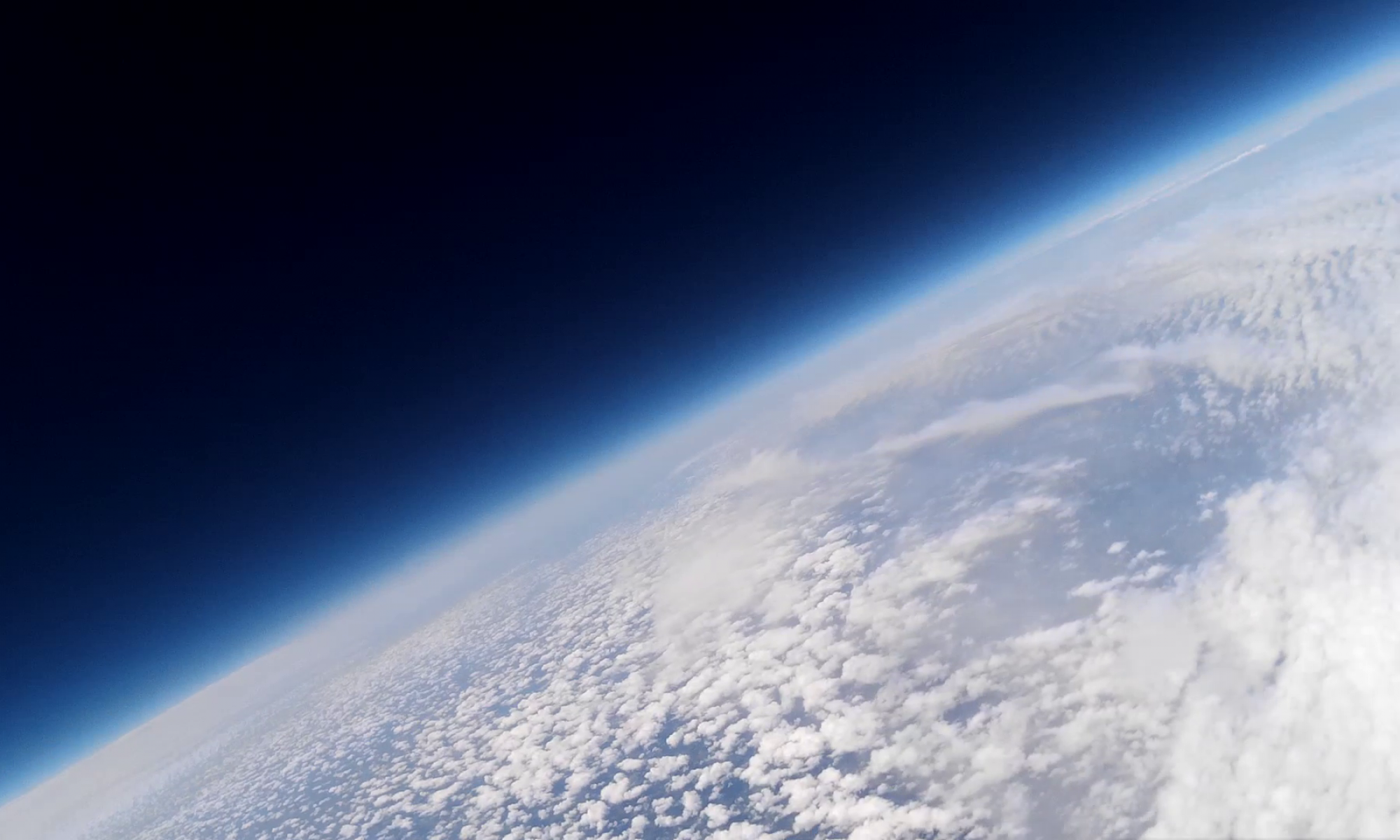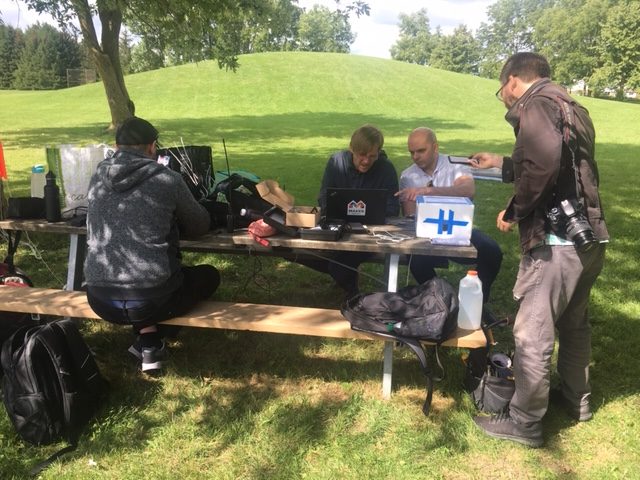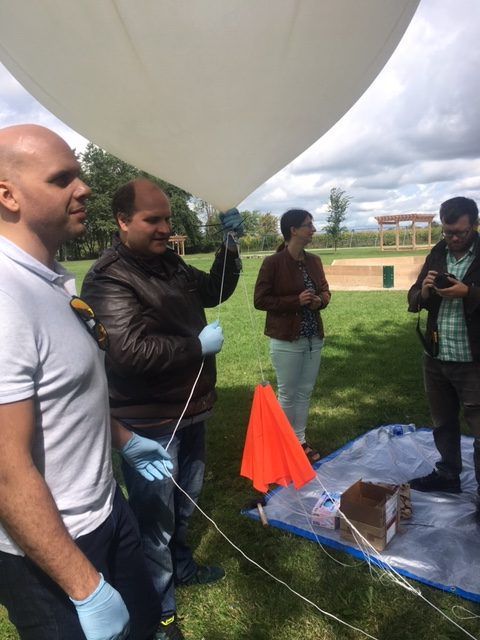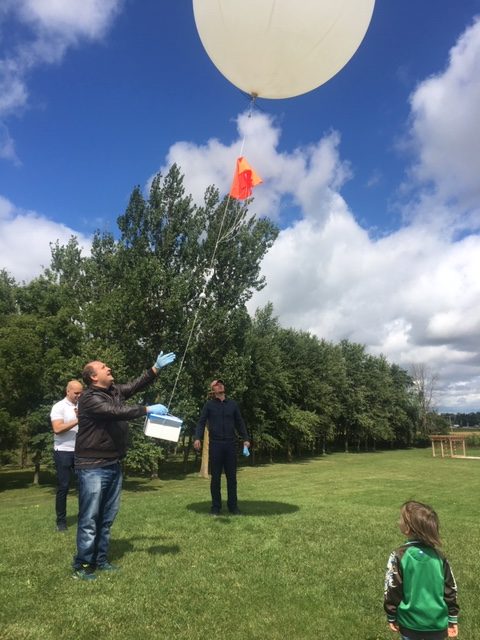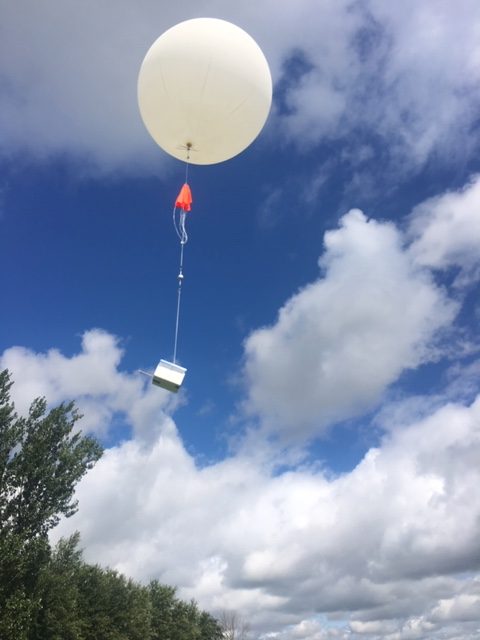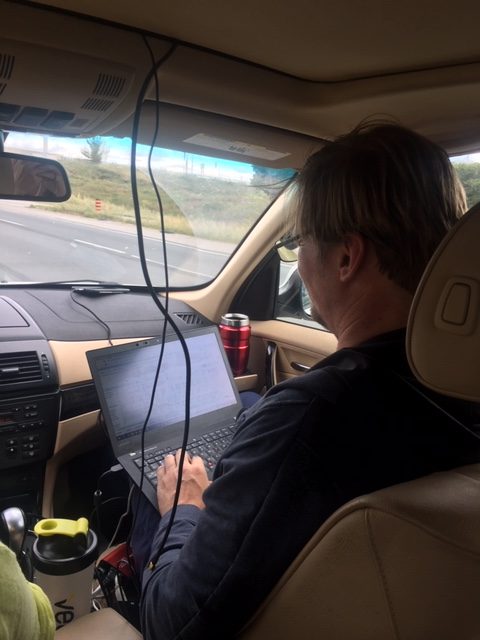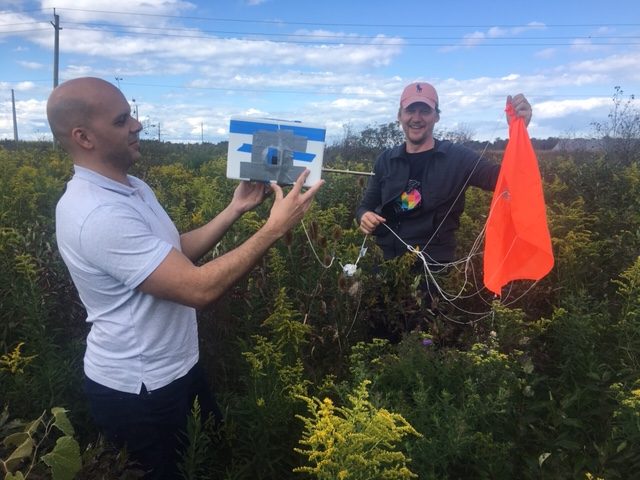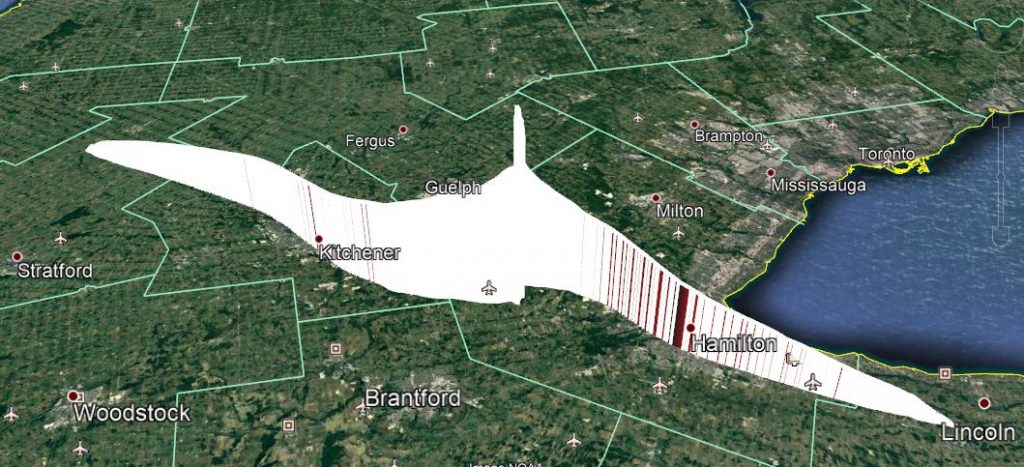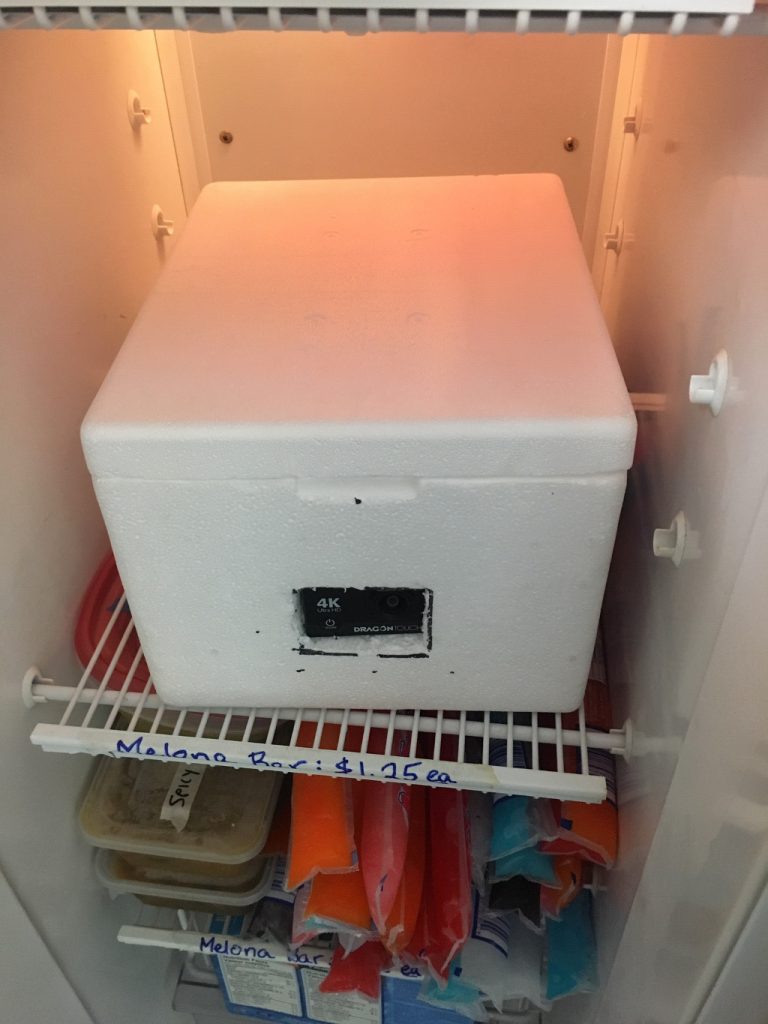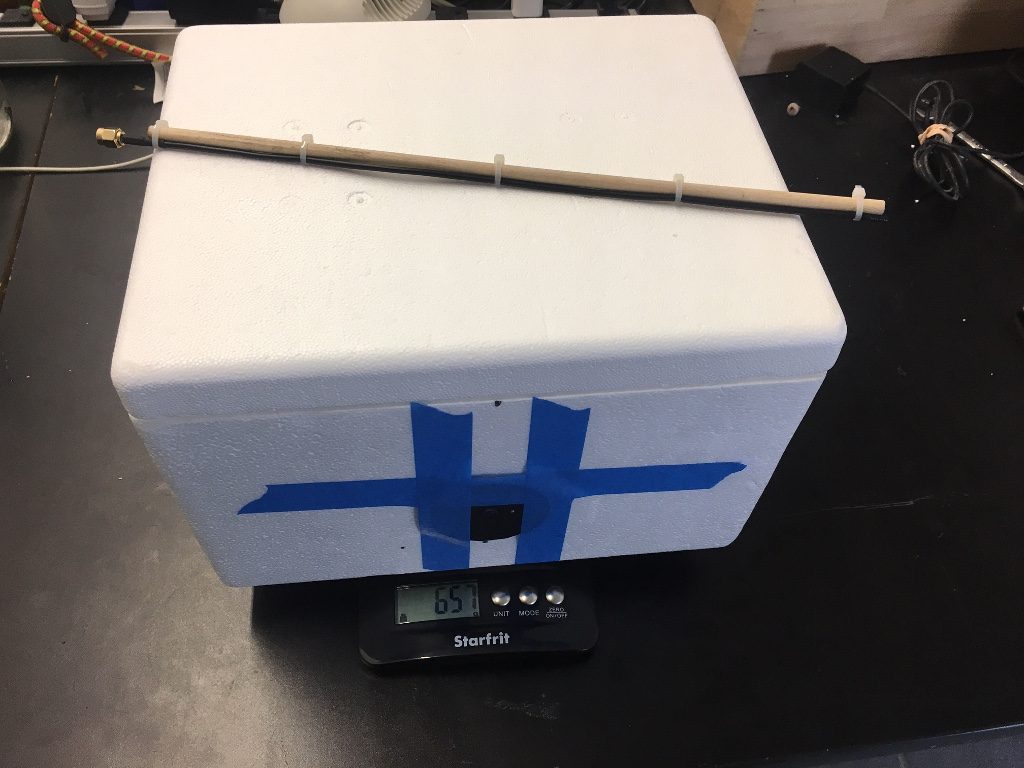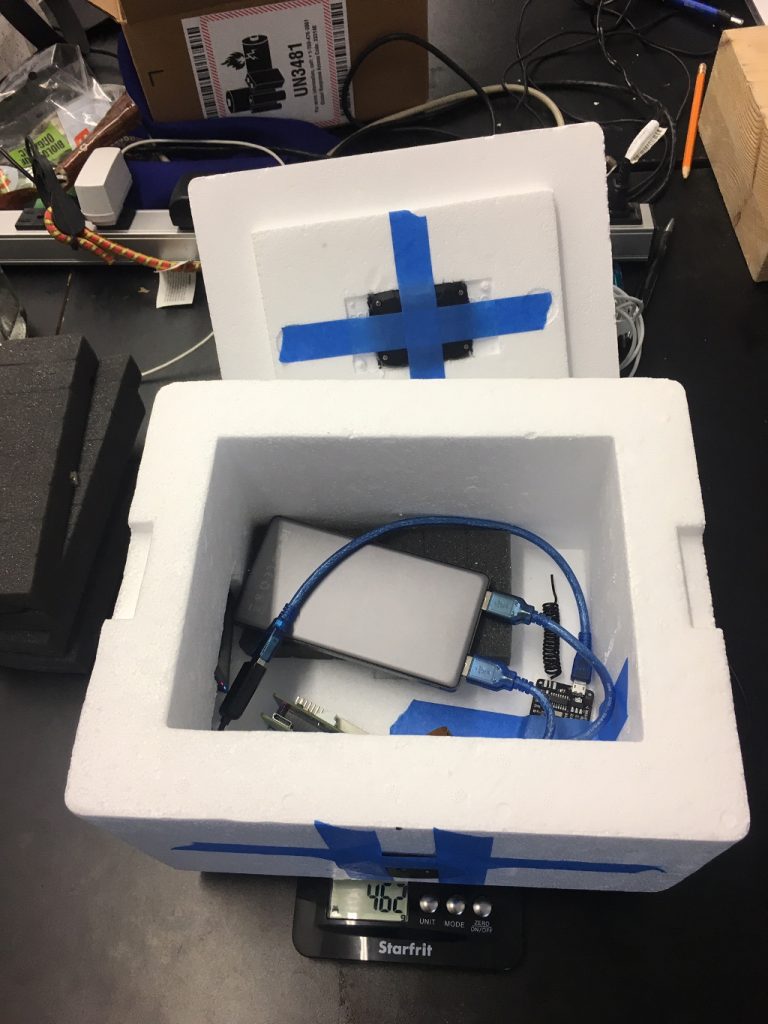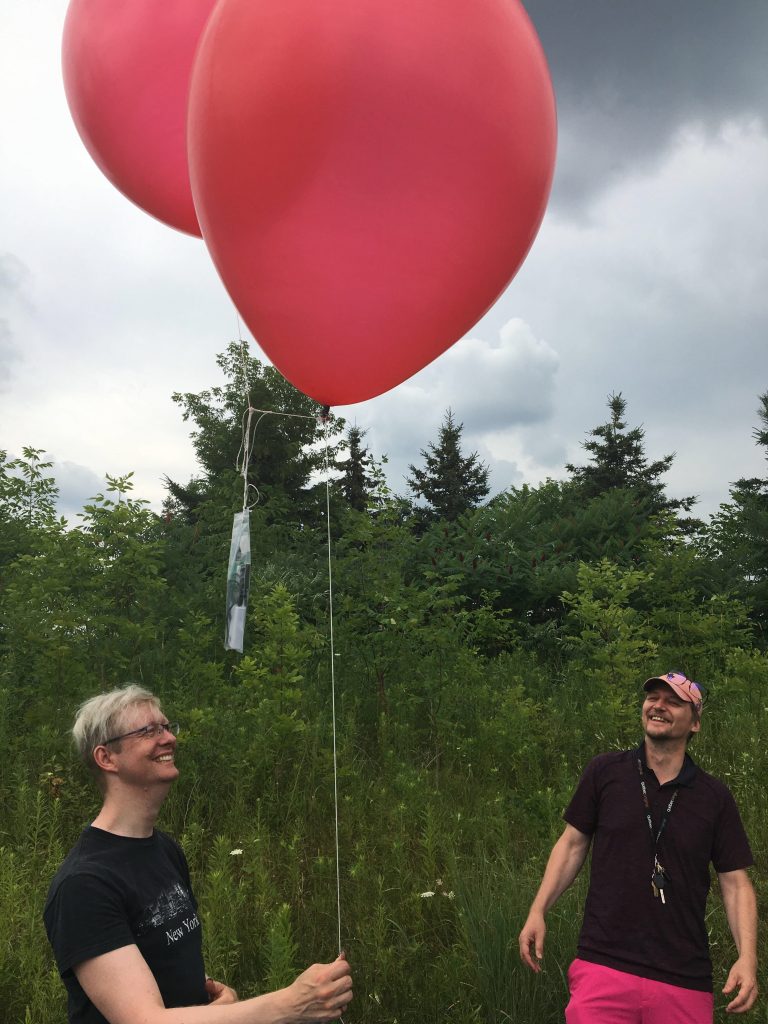On October 10th, 2024, there were forecasts of amazing aurora (northern lights) for huge swathes of Canada and even well down into the USA. A couple of space club members did late-evening trip to Richardson’s Lookout Conservation Area, which is just over an hour from downtown Toronto. So, it’s not super dark (too close to the city for that), but it’s quick to get to.
And indeed, the skies did not disappoint! Before you look at these images, just fair warning – as awesome as they are, they do NOT do the actual aurora any justice! It was the entire sky, it was super bright, and it was slowly changing in a way that was hard to observe, but beautiful, and transformative over time. You’d stare at a bit of it, then look somewhere else, and when you looked back, it’d be all different and even more beautiful!
Check out this amazing gallery of photos that we took! Images on top by Eric, using an iPhone 12 Mini, images on bottom by Pavel, using a Samsung Galaxy S10e (SM-G970W). This kind of thing, the images often look little like what you see with the naked eye – and that’s why it’s so interesting to compare across two different cameras like this. In my opinion, the Android images do better at conveying how BRIGHT in the sky the aurora was (it really stood out against both the trees and the darker sky; the sky is kinda washed out in the iPhone images, and that’s not correct), while the COLOURS come through better in the iPhone shots (it really was red and greens, unlike the sort of orange that you see in the Samsung photos). But both miss the sheer scale of the thing, obviously – these are just small pieces of the sky, the Aurora was everywhere! Also, click each image to see larger version!
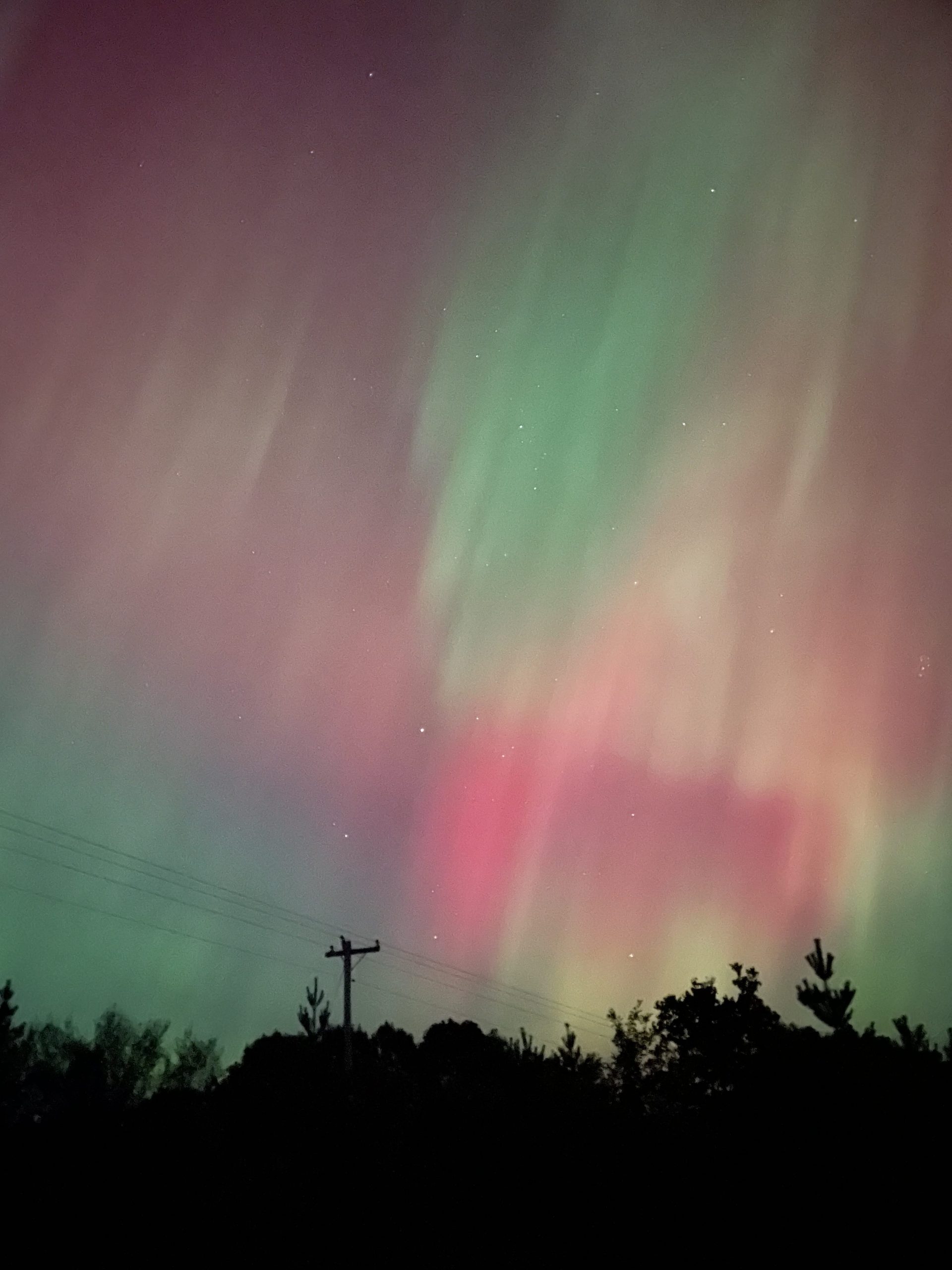
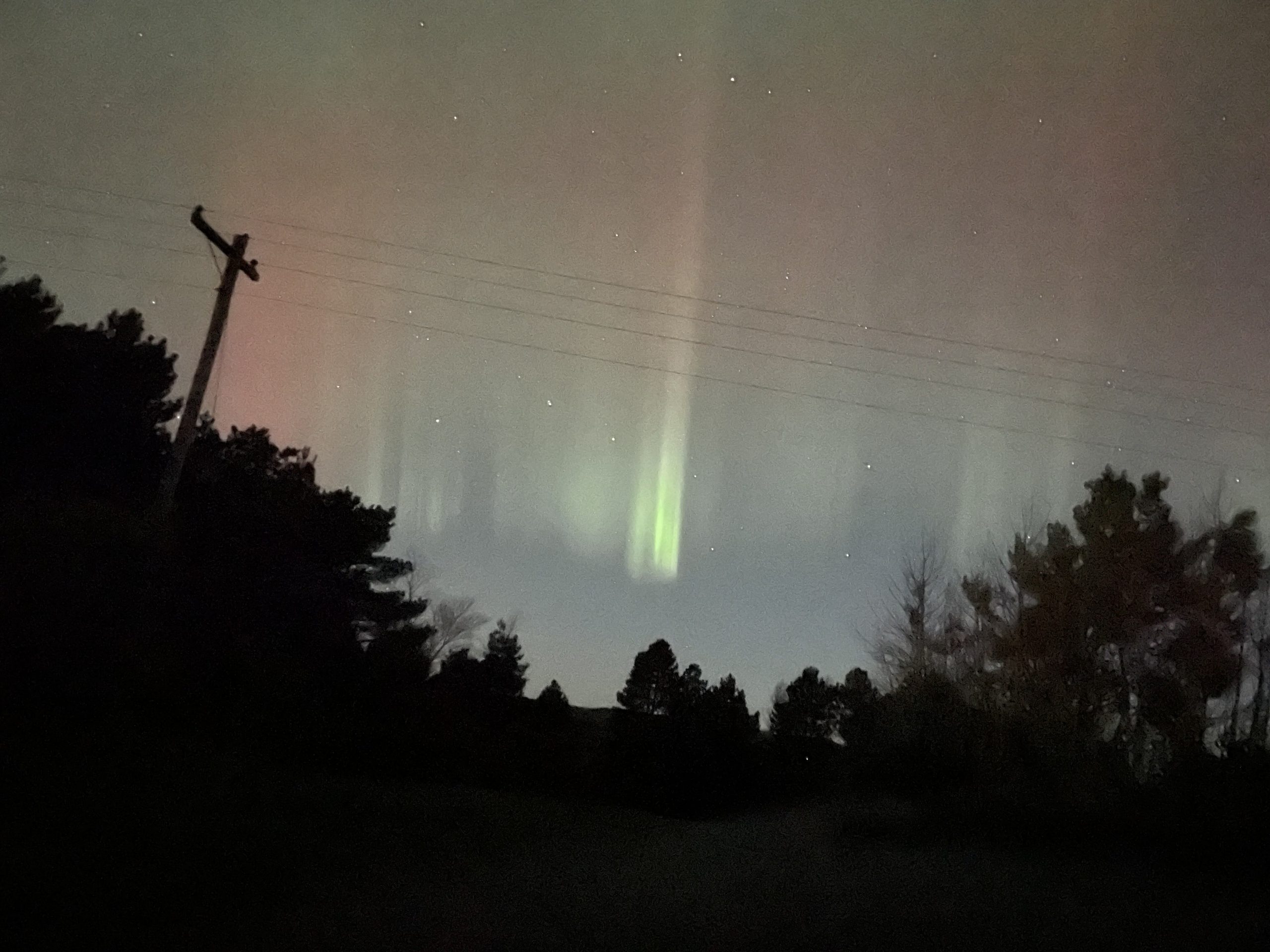
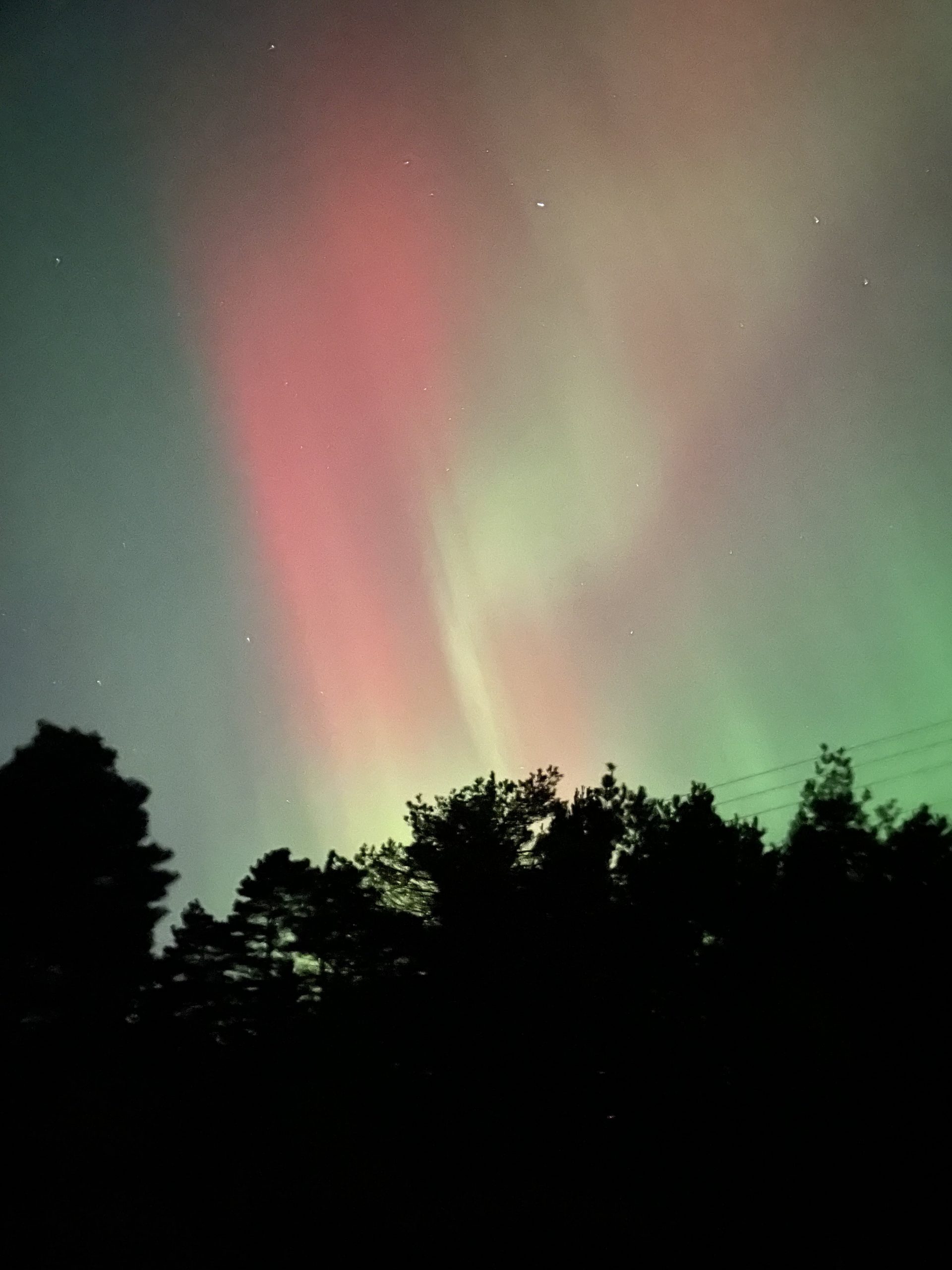
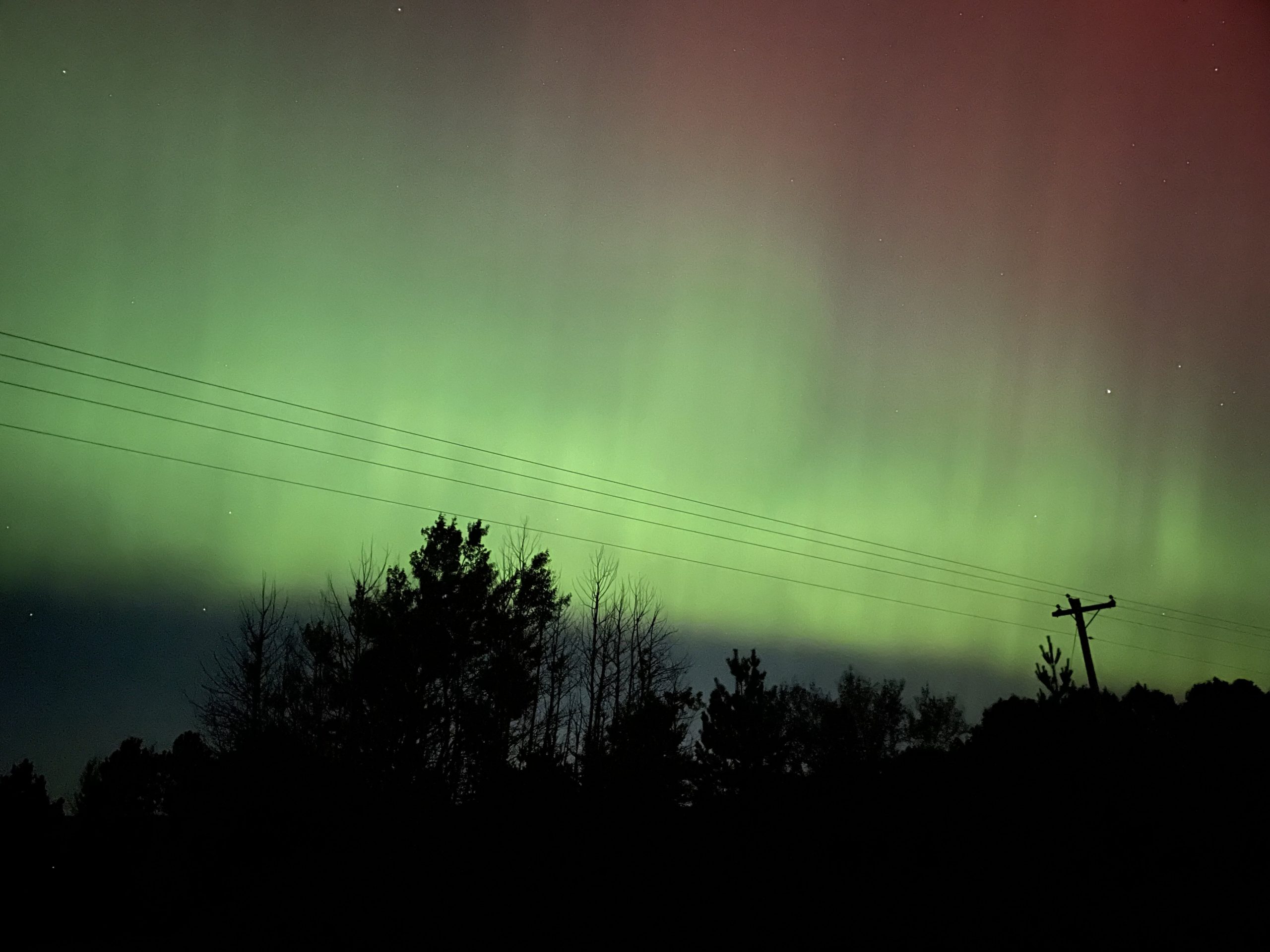
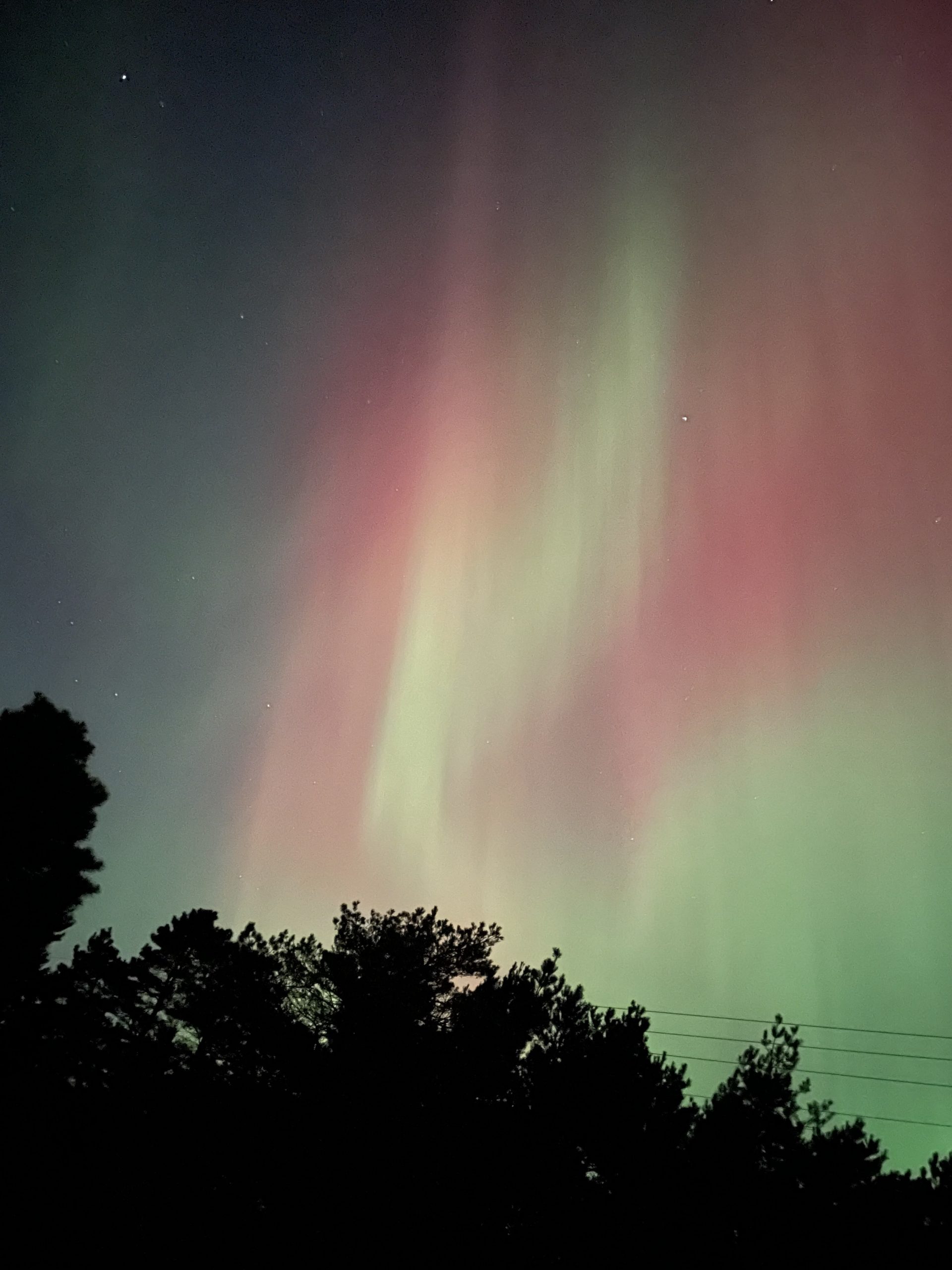
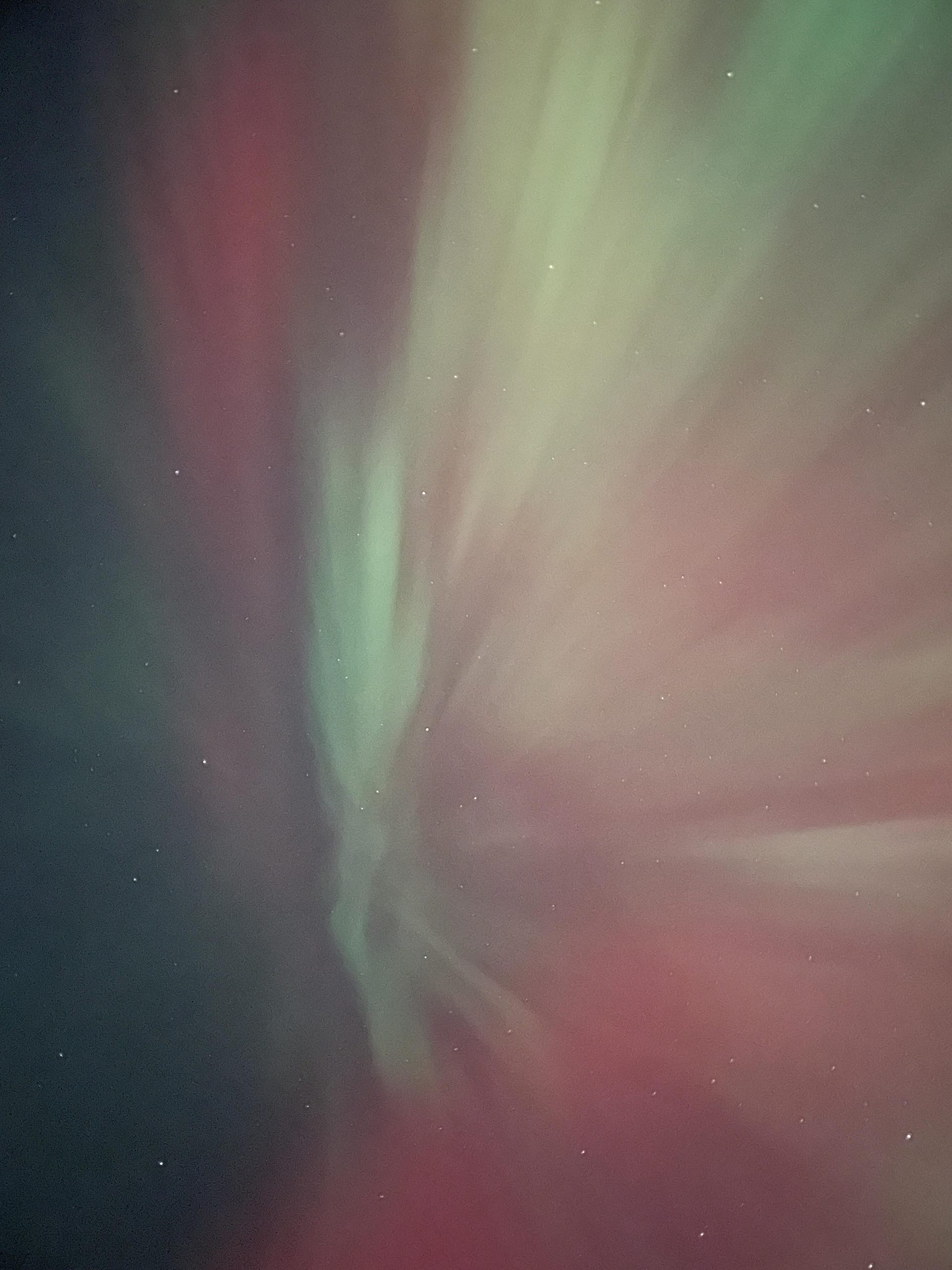
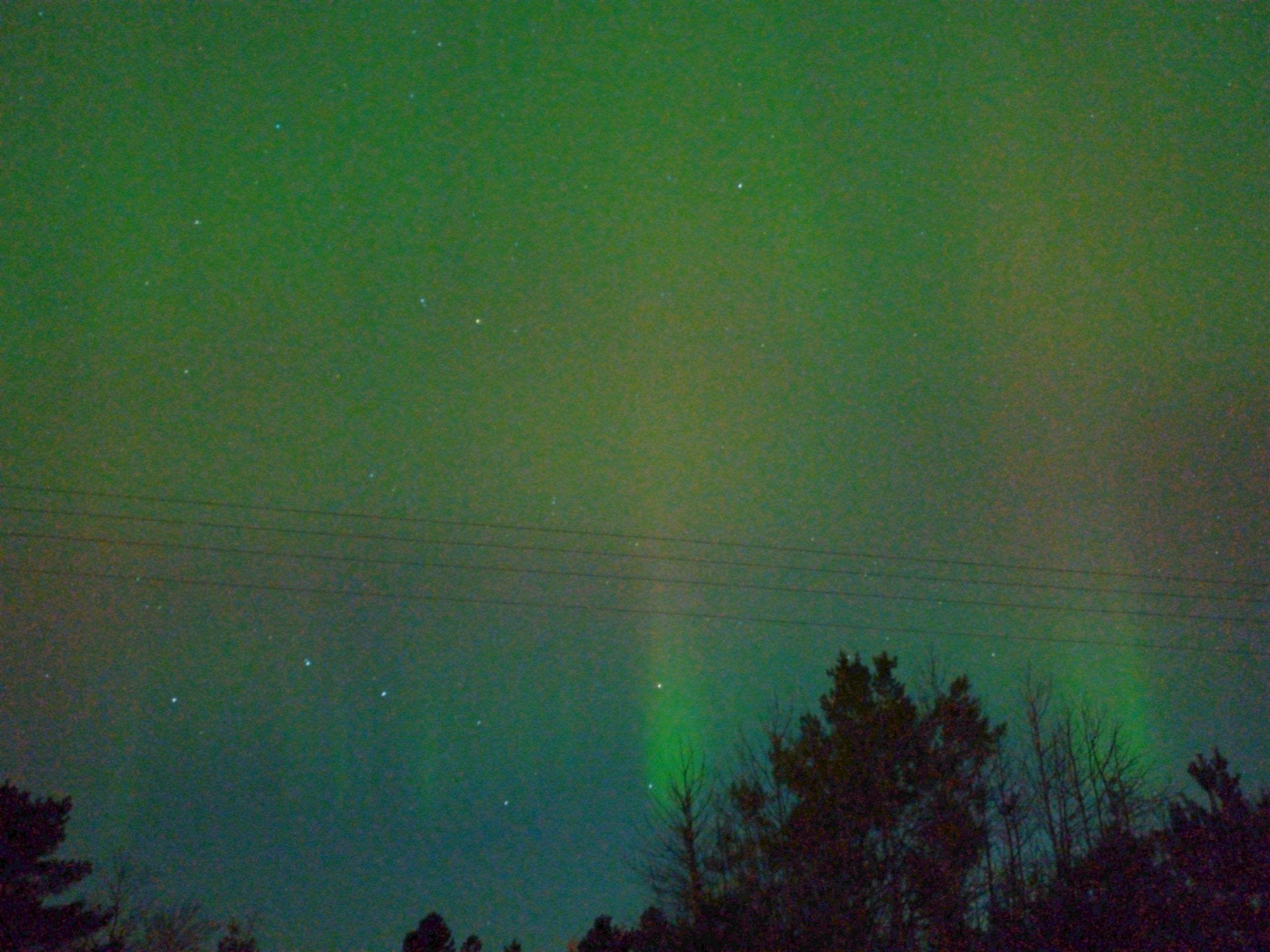
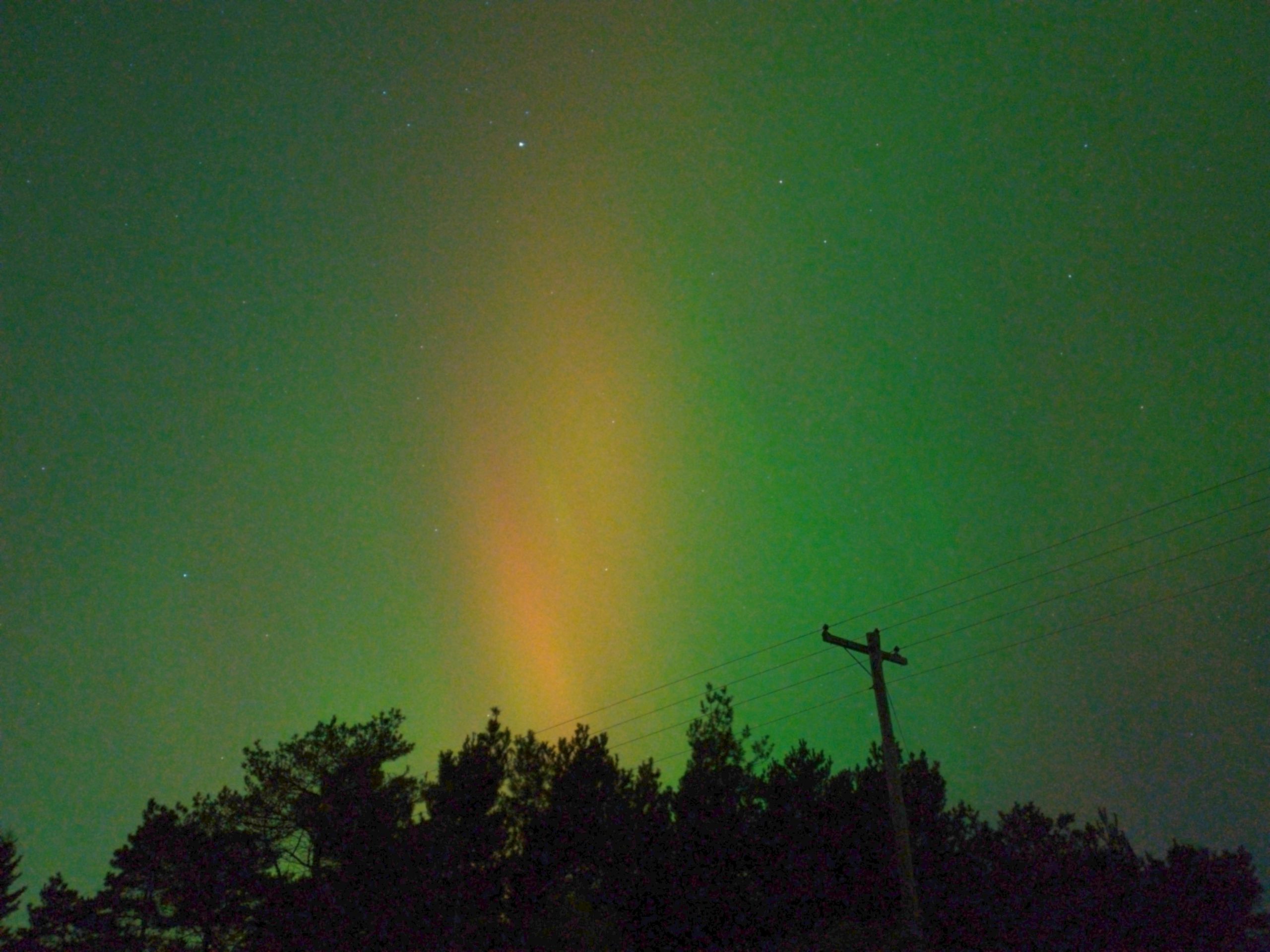
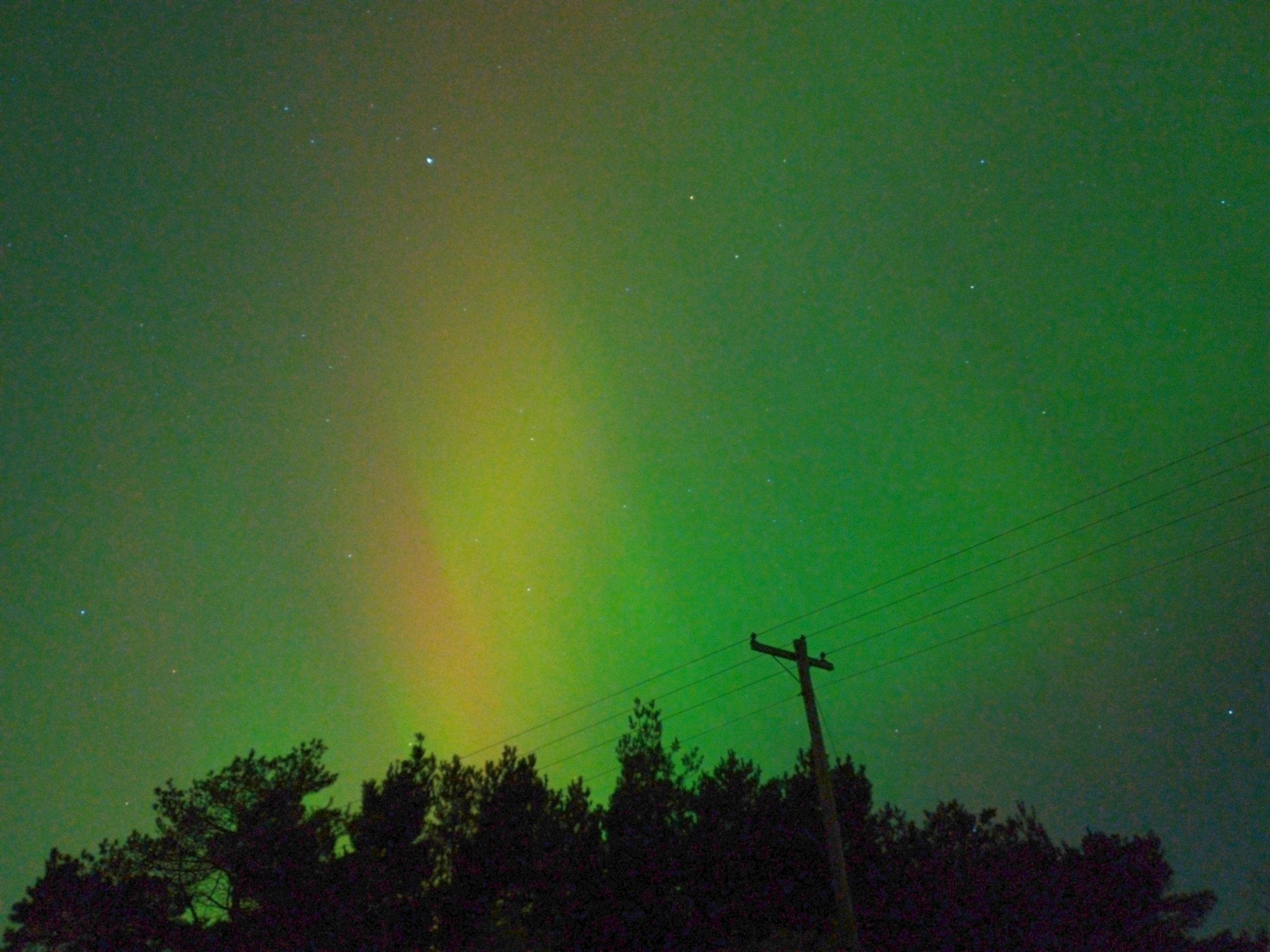
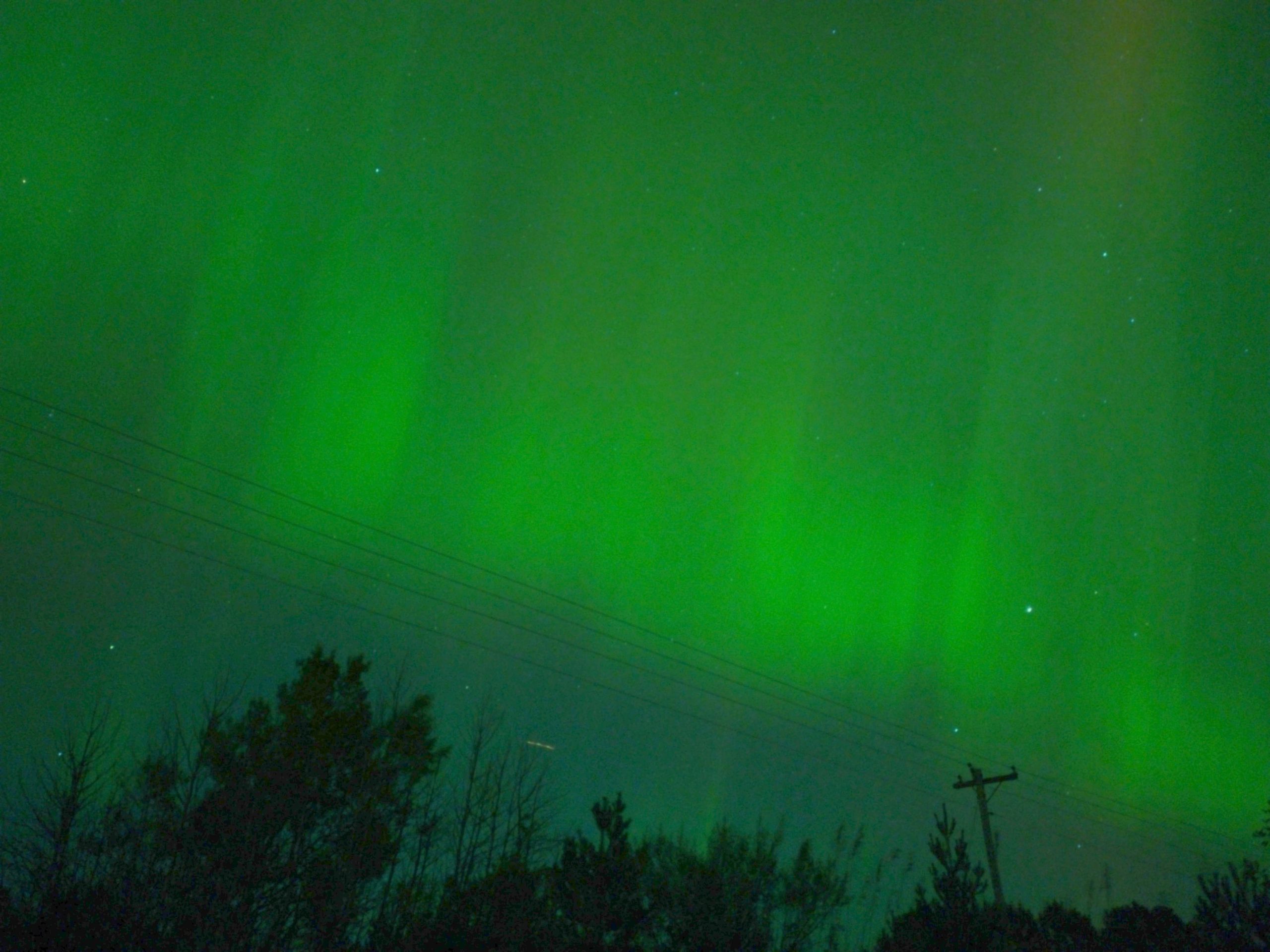
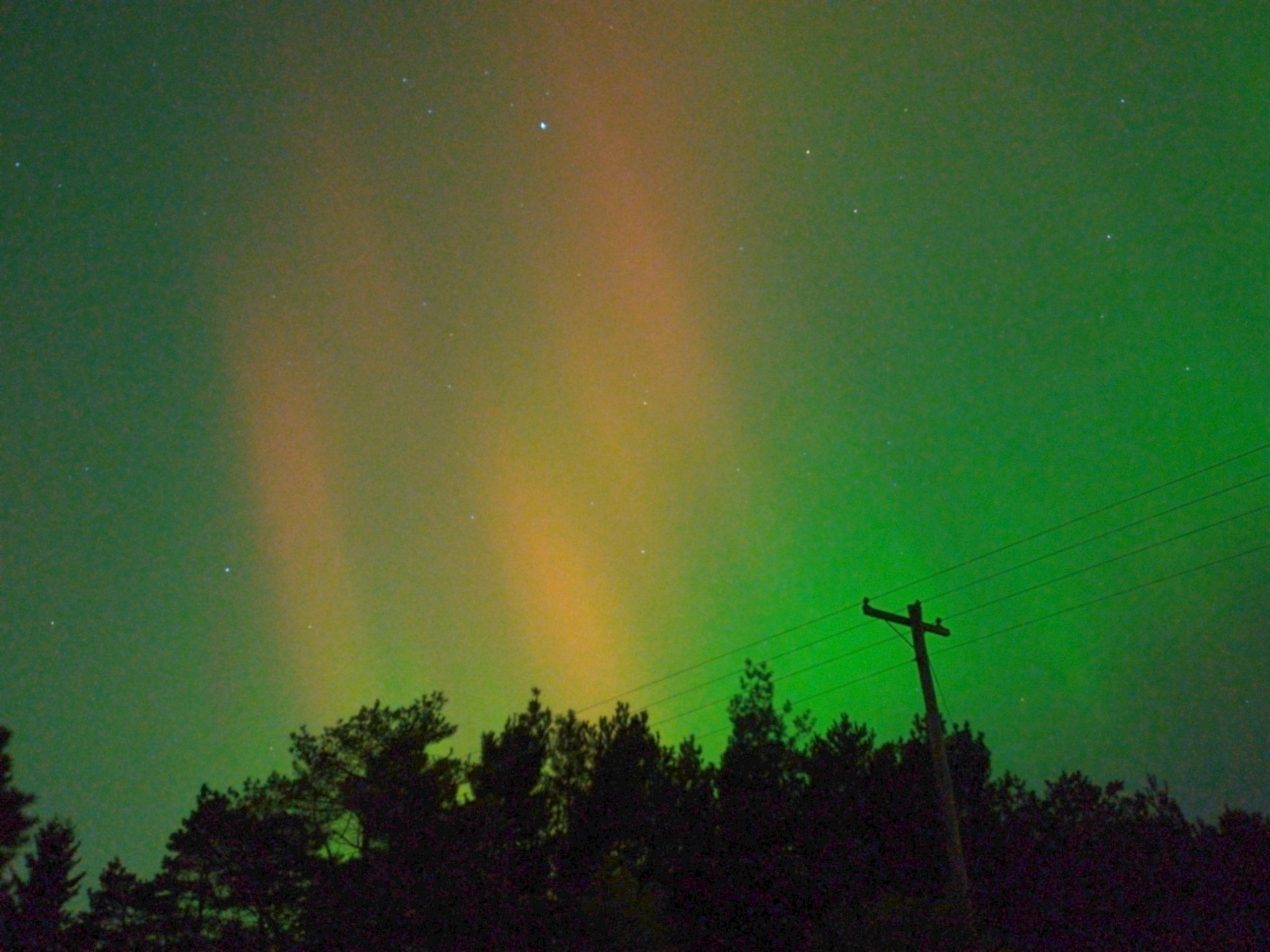
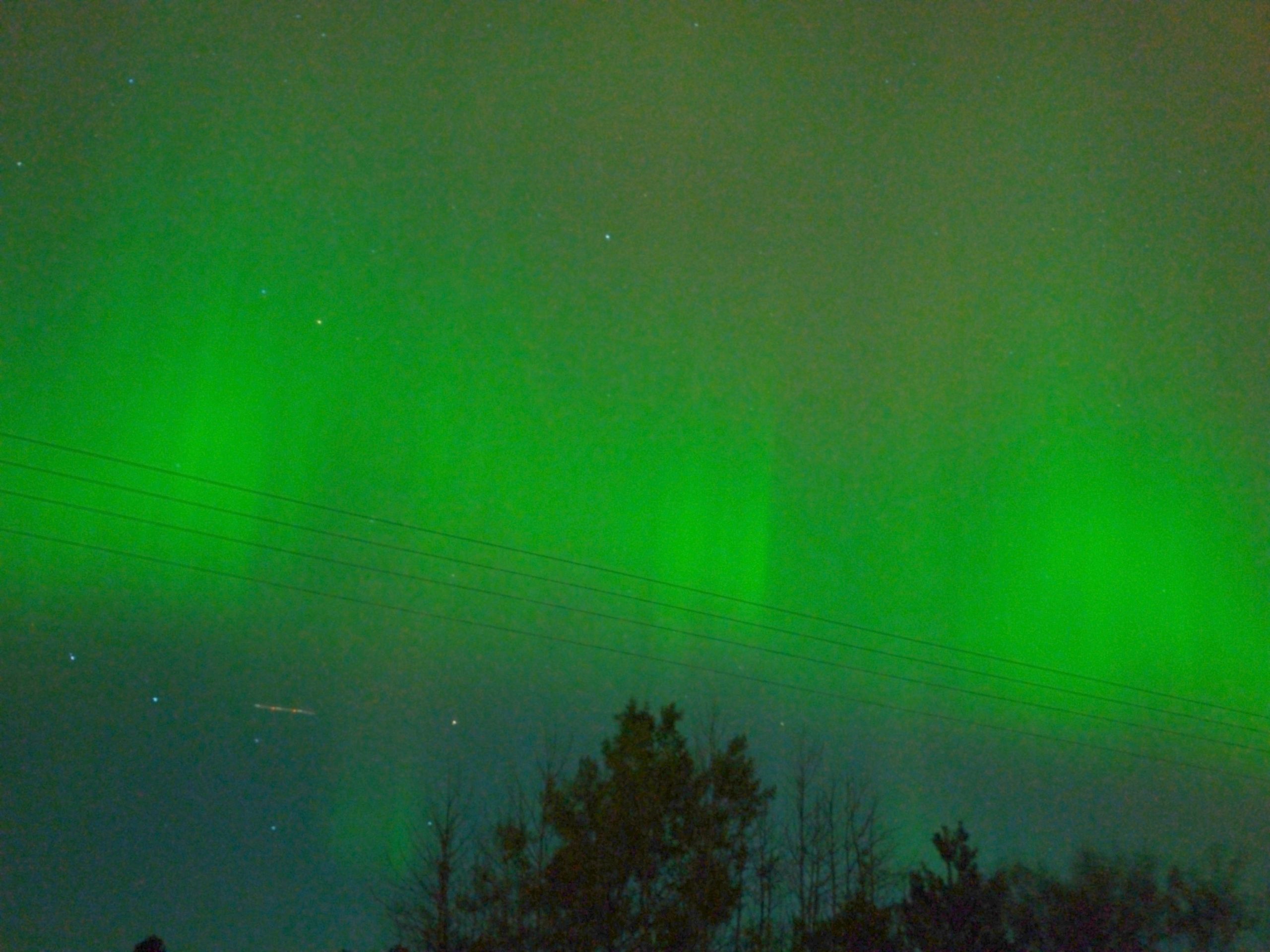
Anyway, we’re getting close to the peak of the solar cycle now, so there is a decent chance that there will be another opportunity to see something like this in the northern hemisphere over the next year or two. If so, I strongly recommend you go see it, absolutely incredible! Not to be missed!
